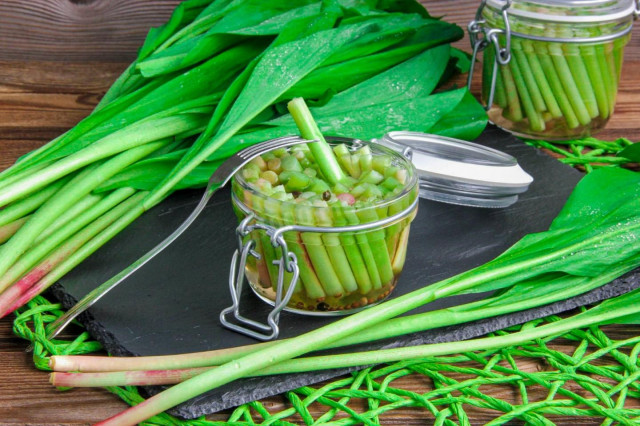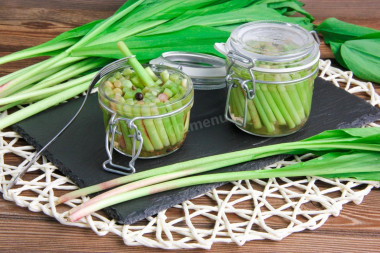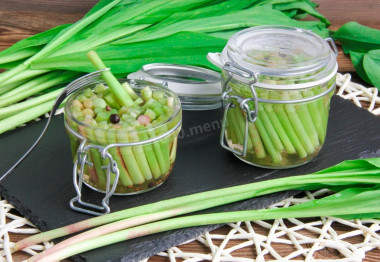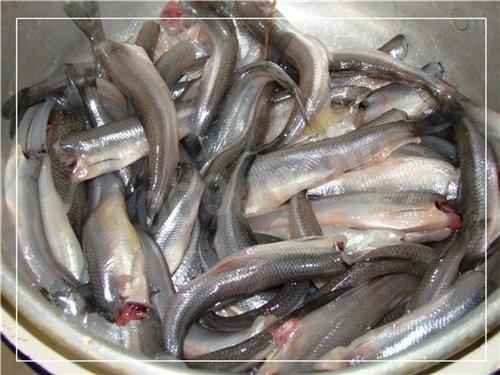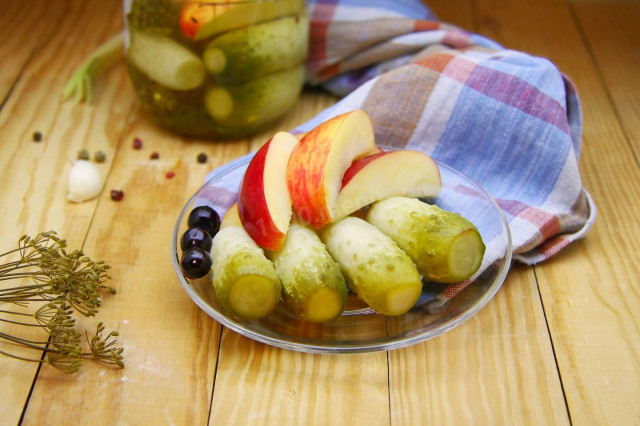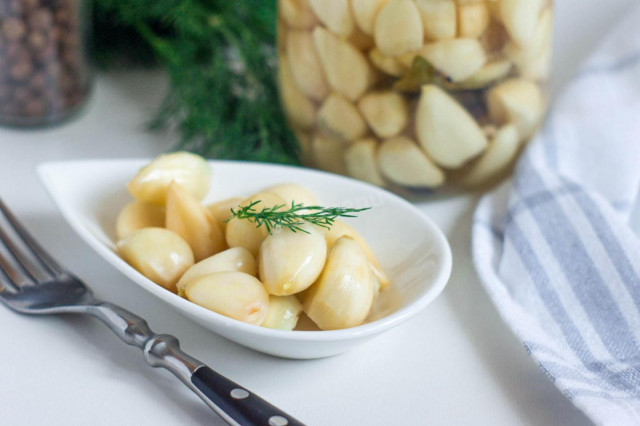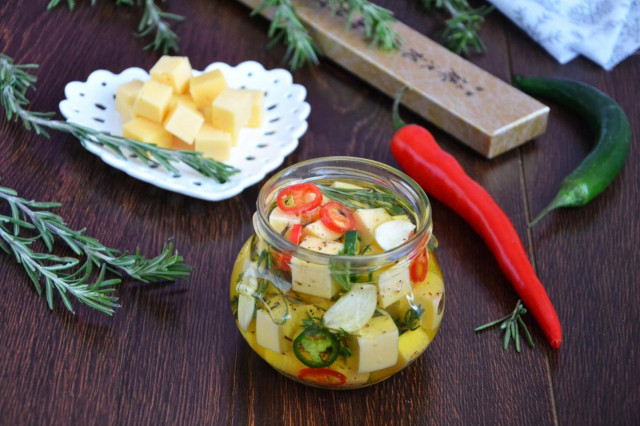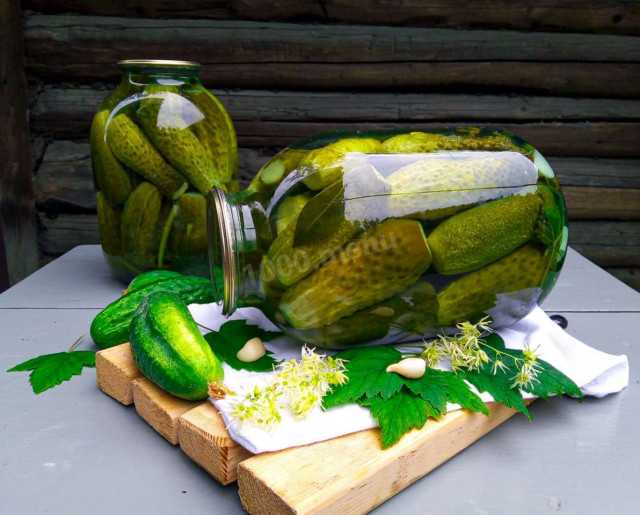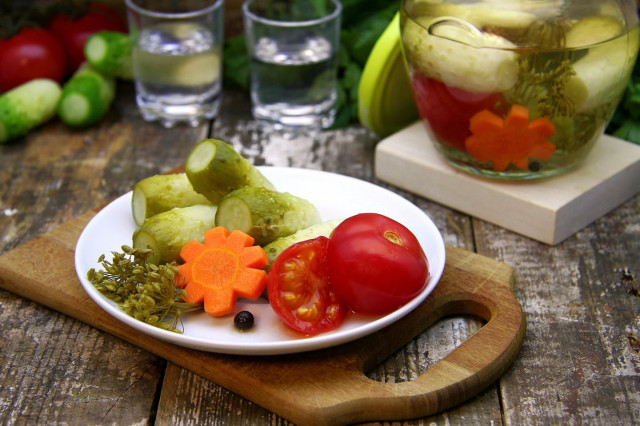Composition / ingredients
Step-by-step cooking
Step 1:
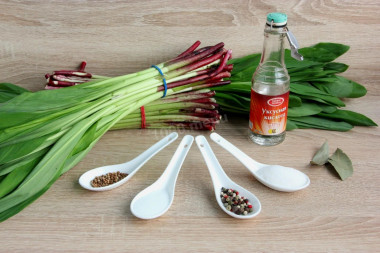
How to pickle wild cherry for the winter? Any cherry is suitable for pickling, but if you buy it, try to choose one with a thick and juicy stem. The leaves are not involved in this recipe, just do not rush to throw them away, use them in a salad or freeze. Vinegar 9%, if you have only essence, dilute in a ratio of 1:7 (parts of water), or use the vinegar calculator on the website. Take coarse salt for salting, without iodine.
Step 2:
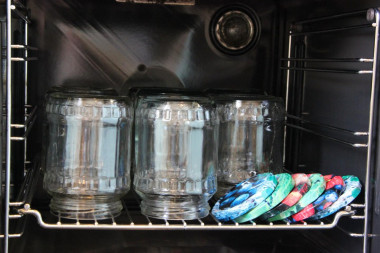
Prepare the jars. Rinse them with baking soda, rinse well under running water. Wet put in a cold oven with the neck down, also spread out the lids. Turn on 150 degrees, after reaching the set temperature, sterilize the jars 0.5-0.7 liters for 9 minutes, 1L-15 minutes, 2L - 20. For me, this method of sterilization is the most convenient, I have been using it for many years, I have never failed. You can use another one: in the microwave or over steam, as you are used to.
Step 3:
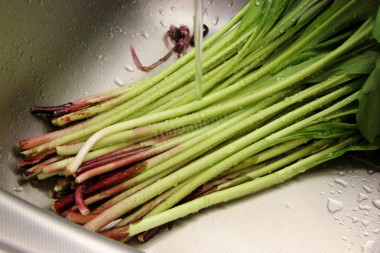
Prepare the wild cherry. There may always be soil residues on the greens, so soak it in cool water for 15 minutes. Use a wide dish so that the cherry is completely covered with water. Then rinse thoroughly under running water. Clean the stems from the burgundy film, and sort along the way, getting rid of the damaged ones. Such stems should not get into the workpiece, they can cause fermentation and spoil the product.
Step 4:
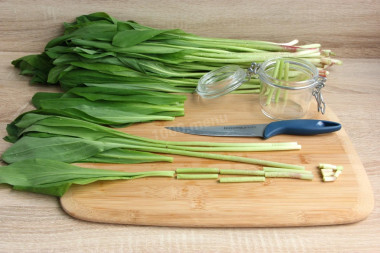
Now cut off the middle, fleshy part of the stem, cutting off the leaves and the root part. Use the resulting stem entirely if the jar is high or cut it smaller, focusing on the size of your jars. Place the cut stems in jars tightly horizontally or slightly at an angle so that more will enter and then there will be no voids.
Step 5:
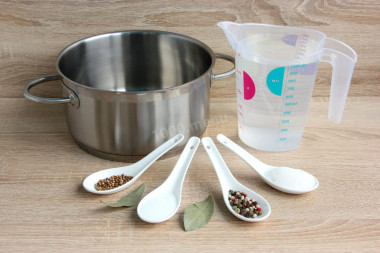
Prepare the brine. How to make brine? Pour 0.5 liters of water into a saucepan, add coriander seeds, pepper, a couple of bay leaves, and sugar and salt. Take a tablespoon with a small slide. Bring to a boil, reduce the heat to a minimum to avoid excessive boiling, and let it boil for 5 minutes.
Step 6:
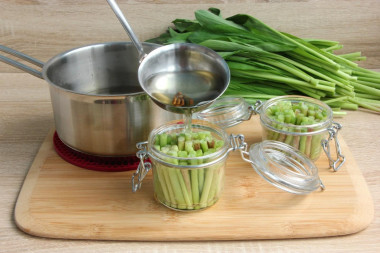
Pour boiling brine into jars almost to the top. In each jar, evenly distribute the spices and lavrushka.
Step 7:
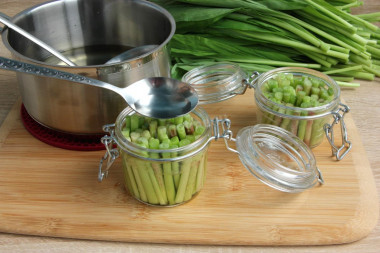
Then pour in the vinegar, add the brine to the top of the rim and close the jars with sterile lids. The brine is enough for 2 jars of 0.5 liters. and a little remains. Pour 2 tablespoons of 9% vinegar into each jar. Vinegar, sugar and salt are preservatives, do not change their quantity and concentration so that fermentation does not begin, otherwise you risk losing the workpiece.
Step 8:
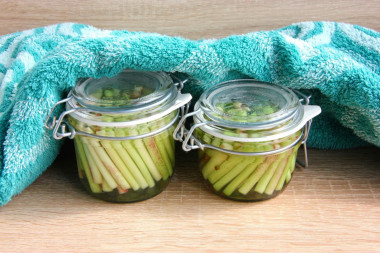
Now flip the jars onto the lid to check the sealing and cover with something warm. Leave it like this until it cools down completely, and then put it in a cool storage place. Such a billet ripens within a month, is stored for up to a year, but is eaten earlier. Served as an appetizer or as an addition to dishes of meat, fish, potatoes. It is used in the preparation of salads, sauces, soups. I didn't cook for the winter, so I didn't turn the cans over.
Ready-made pickled cherry has its characteristic, light garlic taste. It is perfectly complemented by the unobtrusive sharpness of pepper, the piquancy of coriander, and a slight shade of dill.
The dish is quite common in places where wild cherry grows. But you may not like it because of the garlic taste, or vice versa - it will delight you completely, it all depends on your personal preferences.
So that summer supplies are guaranteed to delight you throughout the cold season, read the basic rules, secrets and life hacks about preparations for the winter.
For cooking, it is better to use filtered or bottled water that is neutral to taste. If you use tap water, keep in mind that it can give the dish an unpleasant characteristic taste.
Since the degree of salinity, sweetness, bitterness, sharpness, acid, burning is individual for everyone, always add spices, spices and seasonings, focusing on your taste! If you put some of the seasonings for the first time, then keep in mind that there are spices that it is especially important not to shift (for example, chili pepper).
Caloric content of the products possible in the composition of the dish
- Dried ground cilantro - 216 kcal/100g
- Coriander - 25 kcal/100g
- Cilantro, coriander - 25 kcal/100g
- Bay leaf - 313 kcal/100g
- Dill greens - 38 kcal/100g
- Granulated sugar - 398 kcal/100g
- Sugar - 398 kcal/100g
- Wild cherry - 35 kcal/100g
- Salt - 0 kcal/100g
- Water - 0 kcal/100g
- Table vinegar - 11 kcal/100g
- A mixture of peppers with peas - 231 kcal/100g

